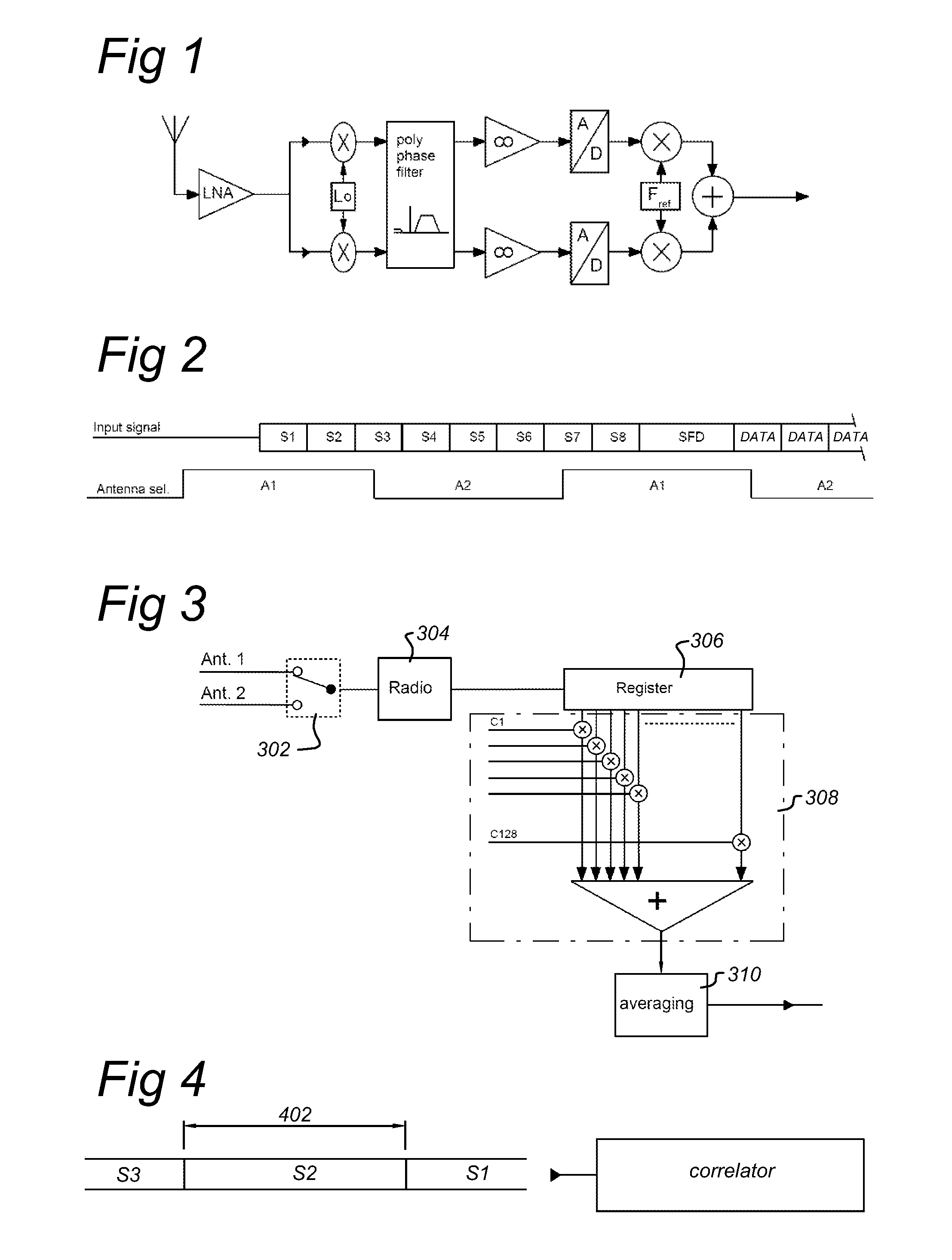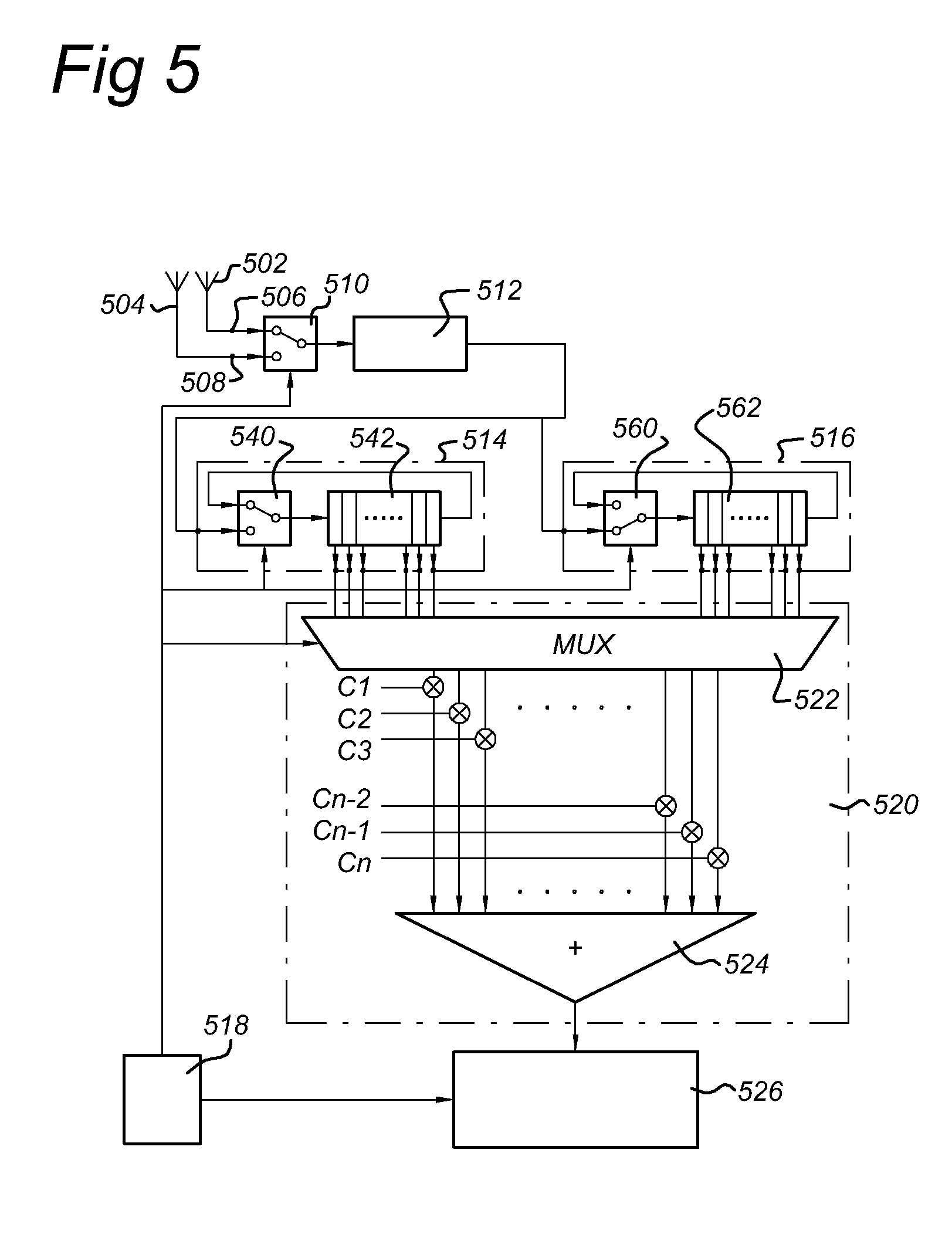Arrangement for determining a characteristic form of an input signal
a technology of input signal and characteristic form, applied in the direction of transmission system, modulated carrier system, transmission, etc., can solve the problem of limiting resources, affecting the accuracy of signal estimation, and compromising design, so as to achieve the effect of accurately estimating the frequency offs
- Summary
- Abstract
- Description
- Claims
- Application Information
AI Technical Summary
Benefits of technology
Problems solved by technology
Method used
Image
Examples
first embodiment
[0088]FIG. 5 shows a simplified block diagram of a receiver according to the invention. The receiver comprises in this embodiment comprises a first and second input terminal 506, 508 coupled to antennae 502, 504 respectively for retrieving a first and second antenna signal. A first multiplexer 510 comprises a first and second input coupled to the first and second input terminal respectively, and a control signal input for retrieving a control signal. The multiplexer being arranged for selecting the first and second antenna signals one by one under control of the control signal so as to obtain a combined antenna signal. The combined antenna signal is supplied to a radio unit 512, as shown in FIG. 1. The radio unit 512 converts the combined antenna signal into a digital IF signal. The digital IF signal is sampled with a sample frequency fSF. The sample frequency is preferably a multiple of the symbol rate or the chip rate in case a symbol is a PN sequence. In the present embodiment, t...
second embodiment
[0105]FIG. 10 shows a simplified block diagram of a combination of rotation units and correlation unit as shown in FIG. 5. Input terminal 1002 is coupled to the output of a radio unit 512 as shown in FIG. 5. The input terminal 1002 receives a digital IF signal having a sample frequency fSF. The combination shown in FIG. 10 comprises a first and a second rotation unit 1004, 1006 and a correlation unit 1008. Each rotation unit has an input, a control signal input (not shown) and an output. The input is arranged for receiving N subsequent samples of the input signal under control of the control signal. The N subsequent samples represent a part of the input signal approximating a symbol period SP. The rotation units 1004, 1006 being arranged for rotating the N subsequent samples to generate N rotated output signals. The first rotation unit 1004 is arranged to receive under control of a control signal (not shown) from the digital IF signal samples corresponding to a first antenna signal ...
PUM
 Login to View More
Login to View More Abstract
Description
Claims
Application Information
 Login to View More
Login to View More - R&D
- Intellectual Property
- Life Sciences
- Materials
- Tech Scout
- Unparalleled Data Quality
- Higher Quality Content
- 60% Fewer Hallucinations
Browse by: Latest US Patents, China's latest patents, Technical Efficacy Thesaurus, Application Domain, Technology Topic, Popular Technical Reports.
© 2025 PatSnap. All rights reserved.Legal|Privacy policy|Modern Slavery Act Transparency Statement|Sitemap|About US| Contact US: help@patsnap.com



